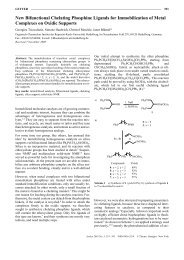Cooperative Template-Directed Assembly of Mesoporous Metal ...
Cooperative Template-Directed Assembly of Mesoporous Metal ...
Cooperative Template-Directed Assembly of Mesoporous Metal ...
Create successful ePaper yourself
Turn your PDF publications into a flip-book with our unique Google optimized e-Paper software.
<strong>Cooperative</strong> <strong>Template</strong>-<strong>Directed</strong> <strong>Assembly</strong> <strong>of</strong> <strong>Mesoporous</strong><br />
<strong>Metal</strong>−Organic Frameworks<br />
Lin-Bing Sun, Jian-Rong Li, Jinhee Park, and Hong-Cai Zhou*<br />
Department <strong>of</strong> Chemistry, Texas A&M University, P.O. Box 30012, College Station, Texas 77842-3012, United States<br />
*S Supporting Information<br />
ABSTRACT: Despite great efforts, the development <strong>of</strong> a<br />
reliable way to assemble mesoporous metal−organic<br />
frameworks (mesoMOFs) remains a challenge. In this<br />
work, we have designed a cooperative template system,<br />
comprising a surfactant (cetyltrimethylammonium bromide)<br />
and a chelating agent (citric acid), for the generation <strong>of</strong> a<br />
mesoMOF containing a hierarchical system <strong>of</strong> mesopores<br />
interconnected with microspores. The surfactant molecules<br />
form micelles and the chelating agent bridges the<br />
MOF and the micelles, making self-assembly and crystal<br />
growth proceed under the direction <strong>of</strong> the cooperative<br />
template. However, when the surfactant or the chelating<br />
agent was applied individually, no mesoMOF was<br />
obtained.<br />
<strong>Metal</strong>−organic frameworks (MOFs) are assembled from<br />
organic linkers and metal ion or cluster nodes. The<br />
structure <strong>of</strong> a MOF can be tailored by the judicious choice <strong>of</strong><br />
metal-based building blocks and organic linkers with almost<br />
endless geometrical and chemical variations. 1 Due to their<br />
diverse structure, adjustable functionality, and large surface<br />
areas, MOFs are <strong>of</strong> great interest for potential applications such<br />
as gas storage and separation, catalysis, and drug delivery. 2<br />
However, most MOFs are microporous (pore size < 2 nm). 3<br />
Albeit suitable for gas storage, the small pore size slows down<br />
diffusion and denies the access <strong>of</strong> large molecules to the active<br />
sites inside a MOF, which limits their applications involving<br />
bulky molecules. 4 One method to increase the pore size is to<br />
expand the linker, but framework instability and interpenetration<br />
are almost unavoidable in a MOF with an extended<br />
ligand. 5<br />
Although the surfactant-templating method has been widely<br />
utilized to prepare various mesoporous silicas and metal<br />
oxides, 6 the application <strong>of</strong> such supramolecular templates in<br />
the preparation <strong>of</strong> mesoporous MOFs (mesoMOFs) is sporadic<br />
at best. In the presence <strong>of</strong> surfactants, so far only two<br />
mesoMOFs have been synthesized, in ionic liquid/CO2 and<br />
ethanol/H2O systems, respectively. 7 A generalized co-assembly<br />
mechanism was proposed in which soluble inorganic precursors<br />
combine with surfactant molecules to form intermediates,<br />
which become building blocks for the final mesostructured<br />
hybrid. 6b,8 The key for this co-assembly is the interaction<br />
between precursors and template molecules. For the assembly<br />
<strong>of</strong> a mesoMOF, therefore, the existence <strong>of</strong> such an interaction<br />
<strong>of</strong> considerable strength is essential, which should lead to the<br />
growth <strong>of</strong> a MOF directed by the template and subsequently to<br />
the formation <strong>of</strong> mesostructured intermediates. Otherwise,<br />
macroscopic phase segregation owing to the weak interaction<br />
may take place, and the MOF will crystallize by itself despite<br />
the template. To the best <strong>of</strong> our knowledge, a rational<br />
adjustment <strong>of</strong> the interaction between MOF precursors and<br />
surfactant molecules has not been reported until now, despite<br />
the significance <strong>of</strong> such an interaction for mesoMOF synthesis.<br />
Herein, we present a novel cooperative template system to<br />
direct the synthesis <strong>of</strong> mesoMOFs. A chelating agent was<br />
employed to establish an interaction between metal ions and<br />
surfactant molecules (Scheme 1) through Coulombic attraction<br />
Scheme 1. <strong>Cooperative</strong> <strong>Template</strong>-<strong>Directed</strong> Synthesis <strong>of</strong><br />
MesoMOFs via Self-<strong>Assembly</strong> <strong>of</strong> <strong>Metal</strong> Ions and Organic<br />
Ligands<br />
and coordination. The surfactant played a structure-directing<br />
role by using the chelating agent as a co-template, while no<br />
mesopores were formed in the presence <strong>of</strong> either the surfactant<br />
or the chelating agent individually. By utilizing the cooperative<br />
template, mesoMOFs have been successfully assembled, and<br />
the amount <strong>of</strong> mesopores is tunable by varying the ratio <strong>of</strong><br />
surfactant to chelating agent. The obtained materials possess<br />
well-defined mesostructure, and more importantly, the<br />
mesopore walls consist <strong>of</strong> crystalline microporous frameworks.<br />
A three-dimensional hierarchical pore system has therefore<br />
been fabricated, in which mesopores are interconnected with<br />
Received: October 14, 2011<br />
Published: December 13, 2011<br />
Communication<br />
pubs.acs.org/JACS<br />
© 2011 American Chemical Society 126 dx.doi.org/10.1021/ja209698f | J. Am. Chem.Soc. 2012, 134, 126−129
Journal <strong>of</strong> the American Chemical Society Communication<br />
micropores. These materials thus combine the merits <strong>of</strong> both<br />
micropores and mesopores. We shall incorporate other<br />
surfactants into MOF synthesis utilizing such a cooperative<br />
template strategy, which should become a general pathway<br />
toward novel crystalline frameworks with hierarchical pore<br />
systems.<br />
The mesoMOFs were synthesized in solvothermal reaction<br />
conditions. Copper nitrate hemipentahydrate and benzene-<br />
1,3,5-tricarboxylic acid (H 3BTC) were used to synthesize<br />
crystalline frameworks. An anionic surfactant, cetyltrimethylammonium<br />
bromide (CTAB), and a hydroxy polyacid, citric<br />
acid (CA), were selected as structure-directing agent and<br />
chelating agent, respectively, to form the cooperative template<br />
system. The resultant mesoMOFs were denoted as mesoMOF-<br />
(SmCn), where m and n represent the amount <strong>of</strong> CTAB and<br />
CA in grams, respectively. In the absence <strong>of</strong> the cooperative<br />
template, the reaction <strong>of</strong> Cu(NO 3) 2 and H 3BTC yielded<br />
microporous MOFs, Cu 3(BTC) 2 (HKUST-1) with a pore<br />
diameter <strong>of</strong> 0.86 nm. The introduction <strong>of</strong> CTAB alone to the<br />
synthetic system did not result in mesopores (Figure 1), despite<br />
Figure 1. (a) N 2 adsorption−desorption isotherms and (b) pore size<br />
distributions <strong>of</strong> mesoMOFs synthesized in the presence <strong>of</strong> different<br />
amounts <strong>of</strong> CA. For clarity, isotherms with 0.01−0.10 g <strong>of</strong> CA are<br />
<strong>of</strong>fset by −30, −30, −100, −80, and −70 cm 3 ·g −1 , respectively, while<br />
pore size distributions with 0.01−0.10 g <strong>of</strong> CA are <strong>of</strong>fset by 0.015,<br />
0.030, 0.046, 0.100, and 0.145 cm 3 ·g −1 , respectively.<br />
the fact that CTAB has been widely used as a template for<br />
mesoporous oxides synthesis. 6a,b,9 This means that CTAB alone<br />
cannot act as a structure-directing agent due to its weak<br />
interaction with MOF precursors. Interestingly, in the presence<br />
<strong>of</strong> both CTAB and only small amount <strong>of</strong> CA (0.01 g), some<br />
mesopores have been produced, as evidenced by hysteresis in<br />
the isotherm and the pore size distribution. Moreover, with the<br />
increased dose <strong>of</strong> CA, the amount <strong>of</strong> mesopores increases,<br />
followed by a slight decrease. For a representative sample,<br />
mesoMOF(S0.2C0.05), with a CTAB/CA molar ratio <strong>of</strong> 2.3<br />
(Table S1), the isotherm is between type I, characteristic <strong>of</strong><br />
microporous materials, and type IV, characteristic <strong>of</strong> mesoporous<br />
materials. These results, in combination with the<br />
pronounced hysteresis in the N 2 isotherm, give evidence <strong>of</strong> a<br />
porous structure constructed from both mesopores and<br />
micropores. 10 The BET surface area reaches 1162 m 2 ·g −1<br />
with a pore volume <strong>of</strong> 0.694 cm 3 ·g −1 . In addition to the<br />
mesopores with a diameter <strong>of</strong> 19.6 nm, the sample contains<br />
micropores with a diameter <strong>of</strong> 0.86 nm, which is in line with the<br />
micropore diameter (0.86 nm) estimated from crystallographic<br />
127<br />
data <strong>of</strong> Cu 3(BTC) 2. 11 These results demonstrate that, by using<br />
a cooperative template, mesoporous MOFs with hierarchical<br />
structure have been successfully fabricated, in which mesopore<br />
walls consist <strong>of</strong> microporous frameworks.<br />
It was noticeable that without CTAB, the presence <strong>of</strong> 0.05 g<br />
<strong>of</strong> CA did not result in the formation <strong>of</strong> any mesopores, either<br />
(Figure 2). Nevertheless, the hysteresis loops in N 2 adsorption−<br />
Figure 2. (a) N 2 adsorption−desorption isotherms and (b) pore size<br />
distributions <strong>of</strong> mesoMOFs synthesized in the presence <strong>of</strong> different<br />
amounts <strong>of</strong> CTAB. For clarity, isotherms with 0.05−0.6 g <strong>of</strong> CTAB are<br />
<strong>of</strong>fset by −30, −40, −90, −110, and −200 cm 3 ·g −1 , respectively, while<br />
pore size distributions with 0.05−0.6 g <strong>of</strong> CTAB are <strong>of</strong>fset by 0.015,<br />
0.03, 0.045, 0.100, and 0.135 cm 3 ·g −1 , respectively.<br />
desorption isotherms became observable when CTAB and CA<br />
coexist. The amount <strong>of</strong> mesopores reached the highest at the<br />
CTAB/CA molar ratio <strong>of</strong> 2.3. Further increase <strong>of</strong> the amount <strong>of</strong><br />
CTAB made the hysteresis loop shrink noticeably. These results,<br />
in combination with those from the variation <strong>of</strong> CA amount,<br />
demonstrate that the optimum ratio <strong>of</strong> surfactant to chelating<br />
agent is around 2.3.<br />
Transmission electron microscopy is an important technique<br />
to characterize the mesostructure. Because MOFs are generally<br />
quite sensitive to the electron beam, it is difficult to obtain highquality<br />
images. However, well-defined mesoporous structure<br />
can still be observed from the images displayed in Figure 3.<br />
Figure 3. TEM images <strong>of</strong> the sample mesoMOF(S0.2C0.05) at two<br />
different levels <strong>of</strong> magnification.<br />
This corroborates well with the N 2 adsorption studies and<br />
confirms the mesoporosity <strong>of</strong> the samples.<br />
For the samples synthesized with high CTAB/CA ratios<br />
(including low CA amount or high CTAB amount in Figures S1<br />
dx.doi.org/10.1021/ja209698f | J. Am. Chem.Soc. 2012, 134, 126−129
Journal <strong>of</strong> the American Chemical Society Communication<br />
and S2, respectively), their X-ray diffraction patterns are in good<br />
agreement with that reported for Cu 2(BTC) 3. 11a,12 Nonetheless,<br />
an excess amount <strong>of</strong> CA favors the generation <strong>of</strong> a new crystalline<br />
phase with a typical diffraction line at 2θ =10.1°. The incorporation<br />
<strong>of</strong> excessive CA into frameworks should be responsible for the<br />
new phase (see Supporting Information for details). Infrared<br />
spectra presented in Figures S3 and S4 agree well with XRD<br />
results. Typical IR bands ascribed to Cu 2(BTC) 3 are observable on<br />
the samples with high CTAB/CA ratios, 13 while new bands<br />
emerge with decreasing CTAB/CA ratios. That means, from the<br />
viewpoint <strong>of</strong> acquiring pure Cu 2(BTC) 3 phase, the quantity <strong>of</strong> CA<br />
should be well controlled.<br />
For all samples with pure Cu 2(BTC) 3 phase despite the<br />
number <strong>of</strong> mesopores, thermogravimetric analysis showed<br />
similar weight alteration during thermal treatment, that is, a<br />
weight loss centered at about 100 °C originated from water<br />
desorption, accompanied by a weight loss located at about 310 °C<br />
due to framework degradation (Figures S5 and S6). These<br />
results reflect that the introduction <strong>of</strong> mesopores does not<br />
undermine the stability <strong>of</strong> the materials. It can also be seen<br />
from TGA curves that the crystal phase related to CA is not as<br />
stable as Cu 2(BTC) 3, which undergoes decomposition at a<br />
relatively low temperature <strong>of</strong> 230 °C.<br />
In comparison with their siliceous analogues, the interaction<br />
between MOF precursors and surfactants is much weaker. The<br />
use <strong>of</strong> CTAB as a single template did not direct the<br />
construction <strong>of</strong> mesoporous structure, although the formation<br />
<strong>of</strong> micelles from CTAB molecules has already been clarified. 9,14<br />
Also, the presence <strong>of</strong> CA itself did not lead to the generation <strong>of</strong><br />
mesopores, because CA, as small molecules, cannot form<br />
micelles. 15 However, when CTAB and CA were employed<br />
together, a cooperative template system was generated, and it<br />
exhibited excellent structure-directing effect. This is because<br />
CA interacts with metal and surfactant simutaneously, and a<br />
chemical interaction between MOF precursors and micelles is<br />
built. This interaction leads to the positioning <strong>of</strong> the building<br />
blocks <strong>of</strong> MOFs. The cooperative template thus played a<br />
directing role, making nucleation and crystal growth proceed in<br />
the continuous solvent phase between micelles. A mesostructured<br />
intermediate with the pores occupied by micelles has thus<br />
been fabricated. After the removal <strong>of</strong> templates, porous<br />
materials with hierarchical pores have been produced, in<br />
which mesopore walls consist <strong>of</strong> microporous frameworks.<br />
It should be stated that the ratio <strong>of</strong> surfactant to chelating<br />
agent has a significant effect on mesostructure fabrication. On<br />
one hand, if the amount <strong>of</strong> CA is too low, only a weak<br />
interaction can be established between MOF precursors and<br />
surfactants, or only part <strong>of</strong> the precursors can interact with<br />
surfactants. In this case, microporous MOFs will be produced<br />
due to the lack <strong>of</strong> structure directing in the process <strong>of</strong> crystal<br />
growth. On the other hand, too much CA does not help, either,<br />
taking into account that only CA molecules cooperating with<br />
surfactants are effective. In addition, the excessive amount <strong>of</strong><br />
CA favors the formation <strong>of</strong> another phase. On the basis <strong>of</strong> the<br />
aforementioned results, we propose that the optimal CTAB/<br />
CA molar ratio should be around 2. That means one CA<br />
molecule bridges the interaction <strong>of</strong> two CTAB molecules with<br />
one copper cation, as illustrated in Scheme 1. In the present<br />
study, more than 10 different CTAB/CA ratios were employed for<br />
the preparation <strong>of</strong> mesoporous MOFs. The sample mesoMOF-<br />
(S0.2C0.05), with a CTAB/CA ratio <strong>of</strong> 2.3, exhibits the<br />
optimum mesostructure. These experimental results, therefore,<br />
support the proposed mechanism <strong>of</strong> a cooperative template.<br />
128<br />
In summary, we have developed a new strategy for the<br />
synthesis <strong>of</strong> mesostructured MOFs by taking advantage <strong>of</strong> a<br />
cooperative templating effect. The chelating agent can well<br />
establish the interaction between framework building blocks<br />
and surfactants. The crystal growth is thus directed by micelles<br />
on a nano scale. MesoMOFs containing a hierarchical pore<br />
structure with a three-dimensional intersection network are<br />
successfully prepared, in which mesopore walls are constructed<br />
from a microporous framework. These crystalline materials with<br />
advantages <strong>of</strong> both micropores and mesopores may be<br />
promising candidates for bulky molecule capture, heterogeneous<br />
catalysis, and controlled drug release because <strong>of</strong> merits<br />
■such as improved mass transfer.<br />
ASSOCIATED CONTENT<br />
*S Supporting Information<br />
Experimental details, discussion on CA-related phase, structural<br />
parameters, powder XRD, IR, and TGA <strong>of</strong> mesoMOFs, as well<br />
as powder XRD, IR, and N2 adsorption results <strong>of</strong> samples<br />
related to CA, and complete ref 2g. This material is available<br />
free<br />
■<br />
<strong>of</strong> charge via the Internet at http://pubs.acs.org.<br />
AUTHOR INFORMATION<br />
Corresponding Author<br />
zhou@chem.tamu.edu<br />
■ ACKNOWLEDGMENTS<br />
This work was supported by the U.S. Department <strong>of</strong> Energy<br />
(DOE DE-SC0001015 and DE-AR0000073), the National<br />
Science Foundation (NSF CBET-0930079), and the Welch<br />
Foundation (A-1725).<br />
■ REFERENCES<br />
(1) (a) Tranchemontagne, D. J.; Mendoza-Cortes, J. L.; O’Keeffe,<br />
M.; Yaghi, O. M. Chem. Soc. Rev. 2009, 38, 1257. (b) Yaghi, O. M.;<br />
O’Keeffe, M.; Ockwig, N. W.; Chae, H. K.; Eddaoudi, M.; Kim, J.<br />
Nature 2003, 423, 705. (c) Meek, S. T.; Greathouse, J. A.; Allendorf,<br />
M. D. Adv. Mater. 2011, 23, 141. (d) Zhao, D.; Timmons, D. J.; Yuan,<br />
D.; Zhou, H.-C. Acc. Chem. Res. 2010, 44, 123. (e) Furukawa, H.; Ko,<br />
N.; Go, Y. B.; Aratani, N.; Choi, S. B.; Choi, E.; Yazaydin, A. Ö.; Snurr,<br />
R. Q.; O’Keeffe, M.; Kim, J.; Yaghi, O. M. Science 2010, 329, 424.<br />
(2) (a) Farrusseng, D.; Aguado, S.; Pinel, C. Angew. Chem., Int. Ed.<br />
2009, 48, 7502. (b) Kitagawa, S.; Kitaura, R.; Noro, S.-i. Angew. Chem.,<br />
Int. Ed. 2004, 43, 2334. (c) Li, J.-R.; Kuppler, R. J.; Zhou, H.-C. Chem.<br />
Soc. Rev. 2009, 38, 1477. (d) Sculley, J.; Yuan, D.; Zhou, H.-C. Energy<br />
Environ. Sci 2011, 4, 2721. (e) Dincǎ, M.; Dailly, A.; Liu, Y.; Brown, C.<br />
M.; Neumann, D. A.; Long, J. R. J. Am. Chem. Soc. 2006, 128, 16876.<br />
(f) Taylor-Pashow, K. M. L.; Rocca, J. D.; Xie, Z.; Tran, S.; Lin, W.<br />
J. Am. Chem. Soc. 2009, 131, 14261. (g) Horcajada, P.; et al. Nat. Mater.<br />
2010, 9, 172. (h) Rosi, N. L.; Eckert, J.; Eddaoudi, M.; Vodak, D. T.;<br />
Kim, J.; O’Keeffe, M.; Yaghi, O. M. Science 2003, 300, 1127.<br />
(3) (a) Fang, Q.-R.; Makal, T. A.; Young, M. D.; Zhou, H.-C.<br />
Comments Inorg. Chem. 2010, 31, 165. (b) Wang, X.-S.; Ma, S.; Sun,<br />
D.; Parkin, S.; Zhou, H.-C. J. Am. Chem. Soc. 2006, 128, 16474. (c) Li,<br />
H.; Eddaoudi, M.; O’Keeffe, M.; Yaghi, O. M. Nature 1999, 402, 276.<br />
(d) Férey, G.; Mellot-Draznieks, C.; Serre, C.; Millange, F.; Dutour, J.;<br />
Surblé, S.; Margiolaki, I. Science 2005, 309, 2040. (e) Yuan, D.; Zhao,<br />
D.; Timmons, D. J.; Zhou, H.-C. Chem. Sci. 2011, 2, 103.<br />
(4) (a) Jiang, H.-L.; Tatsu, Y.; Lu, Z.-H.; Xu, Q. J. Am. Chem. Soc.<br />
2010, 132, 5586. (b) Lan, Y.-Q.; Jiang, H.-L.; Li, S.-L.; Xu, Q. Adv.<br />
Mater. 2011, 23, 5015.<br />
(5) (a) Eddaoudi, M.; Kim, J.; Rosi, N.; Vodak, D.; Wachter, J.;<br />
O’Keeffe, M.; Yaghi, O. M. Science 2002, 295, 469. (b) Zhang, Z.;<br />
Xiang, S.; Chen, Y.-S.; Ma, S.; Lee, Y.; Phely-Bobin, T.; Chen, B. Inorg.<br />
Chem. 2010, 49, 8444. (c) Makal, T. A.; Yakovenko, A. A.; Zhou, H.-C.<br />
dx.doi.org/10.1021/ja209698f | J. Am. Chem.Soc. 2012, 134, 126−129
Journal <strong>of</strong> the American Chemical Society Communication<br />
J. Phys. Chem. Lett. 2011, 2, 1682. (d) Shekhah, O.; Wang, H.;<br />
Paradinas, M.; Ocal, C.; Schupbach, B.; Terfort, A.; Zacher, D.;<br />
Fischer, R. A.; Woll, C. Nat. Mater. 2009, 8, 481.<br />
(6) (a) Kresge, C. T.; Leonowicz, M. E.; Roth, W. J.; Vartuli, J. C.;<br />
Beck, J. S. Nature 1992, 359, 710. (b) Soler-Illia, G. J. d. A. A.;<br />
Sanchez, C.; Lebeau, B.; Patarin, J. Chem. Rev. 2002, 102, 4093.<br />
(c) Morris, S. M.; Fulvio, P. F.; Jaroniec, M. J. Am. Chem. Soc. 2008,<br />
130, 15210. (d) Zhang, Z.; Pinnavaia, T. J. J. Am. Chem. Soc. 2002, 124,<br />
12294. (e) Zhao, D.; Feng, J.; Huo, Q.; Melosh, N.; Fredrickson, G.<br />
H.; Chmelka, B. F.; Stucky, G. D. Science 1998, 279, 548.<br />
(7) (a) Qiu, L.-G.; Xu, T.; Li, Z.-Q.; Wang, W.; Wu, Y.; Jiang, X.;<br />
Tian, X.-Y.; Zhang, L.-D. Angew. Chem., Int. Ed. 2008, 47, 9487.<br />
(b) Zhao, Y.; Zhang, J.; Han, B.; Song, J.; Li, J.; Wang, Q. Angew.<br />
Chem., Int. Ed. 2011, 50, 636.<br />
(8) Huo, Q.; Margolese, D. I.; Ciesla, U.; Demuth, D. G.; Feng, P.;<br />
Gier, T. E.; Sieger, P.; Firouzi, A.; Chmelka, B. F. Chem. Mater. 1994,<br />
6, 1176.<br />
(9) Wan, Y.; Zhao, D. Chem. Rev. 2007, 107, 2821.<br />
(10) Gregg, S. J.; Sing, K. S. W. Adsorption, Surface Area and Porosity;<br />
Academic Press: London, 1997.<br />
(11) (a) Chui, S. S.-Y.; Lo, S. M.-F.; Charmant, J. P. H; Orpen, A. G.;<br />
Williams, I. D. Science 1999, 283, 1148. (b) Jaroniec, M.; Solovyov, L.<br />
A. Langmuir 2006, 22, 6757.<br />
(12) (a) Rowsell, J. L. C.; Yaghi, O. M. J. Am. Chem. Soc. 2006, 128,<br />
1304. (b) Mustafa, D.; Breynaert, E.; Bajpe, S. R.; Martens, J. A.;<br />
Kirschhock, C. E. A. Chem. Commun. 2011, 47, 8037.<br />
(13) Shekhah, O.; Wang, H.; Kowarik, S.; Schreiber, F.; Paulus, M.;<br />
Tolan, M.; Sternemann, C.; Evers, F.; Zacher, D.; Fischer, R. A.; Wöll,<br />
C. J. Am. Chem. Soc. 2007, 129, 15118.<br />
(14) Beck, J. S.; Vartuli, J. C.; Roth, W. J.; Leonowicz, M. E.; Kresge,<br />
C. T.; Schmitt, K. D.; Chu, C. T. W.; Olson, D. H.; Sheppard, E. W.<br />
J. Am. Chem. Soc. 1992, 114, 10834.<br />
(15) (a) Wei, Y.; Jin, D.; Ding, T.; Shih, W.-H.; Liu, X.; Cheng, S. Z.<br />
D.; Fu, Q. Adv. Mater. 1998, 10, 313. (b) Pang, J.-B.; Qiu, K.-Y.; Wei,<br />
Y.; Lei, X.-J.; Liu, Z.-F. Chem. Commun. 2000, 477.<br />
129<br />
dx.doi.org/10.1021/ja209698f | J. Am. Chem.Soc. 2012, 134, 126−129


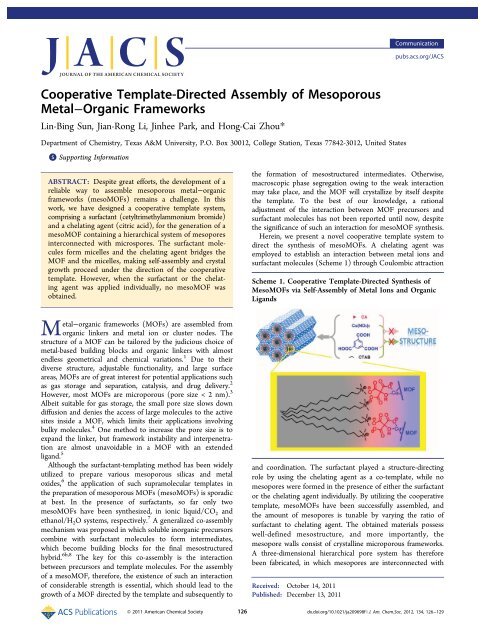
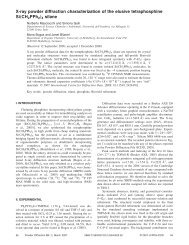
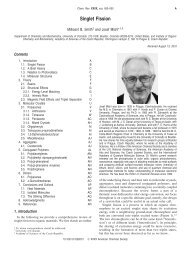
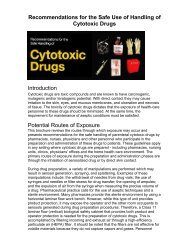
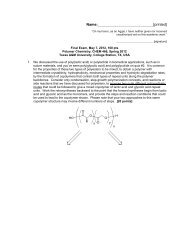

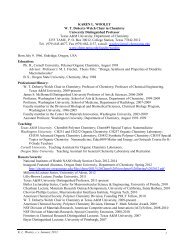
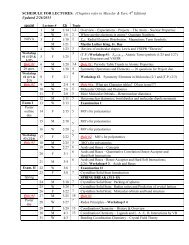
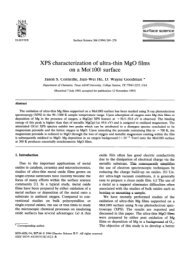
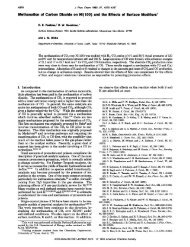
![Radical salts of TTF derivatives with the metal–metal bonded [Re2Cl8]](https://img.yumpu.com/10115211/1/190x253/radical-salts-of-ttf-derivatives-with-the-metal-metal-bonded-re2cl8.jpg?quality=85)



